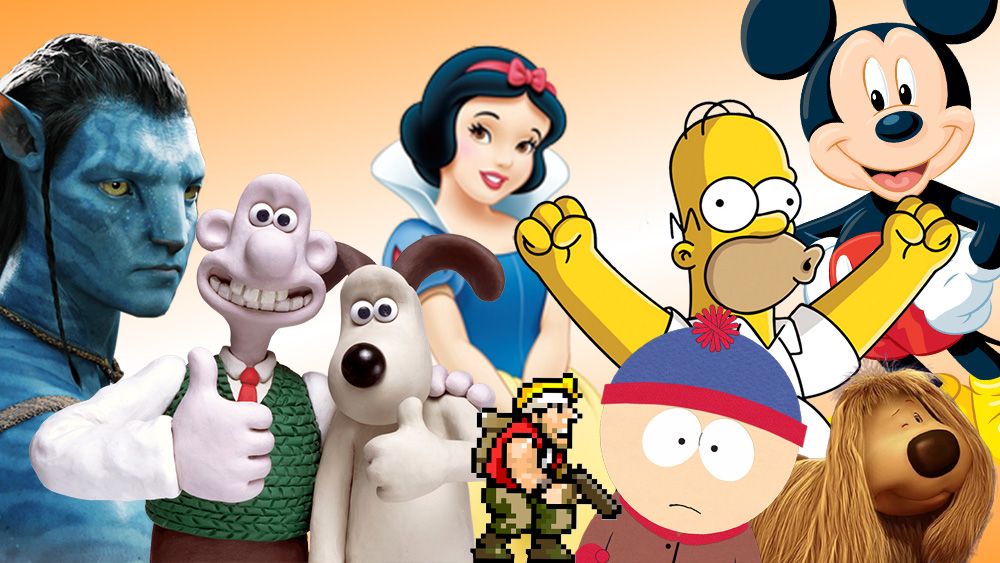The video game industry has undergone a radical transformation over the past few decades. From pixelated graphics of the early 1980s to today’s hyper-realistic, immersive environments, one factor has played a pivotal role in this evolution: 3D animation.
Behind every dynamic character movement, lifelike environment, and fluid cinematic cutscene, 3D animation works as the invisible force that brings video games to life. The use of 3D animation services has become a cornerstone for game developers, enabling them to deliver stunning visuals and engaging player experiences.
This blog explores the vital role of 3D animation in video games, the processes behind it, its impact on storytelling and gameplay, and how it connects with innovations like 3D product animation services.
Evolution of 3D Animation in Video Games
In the early days of gaming, characters were confined to two-dimensional sprites. Games like Super Mario Bros. and Pac-Man relied on pixel art, which—while iconic—lacked realism and depth. The 1990s introduced a revolutionary leap with 3D-capable consoles such as the PlayStation and Nintendo 64, bringing polygonal graphics and early 3D animation.
Fast forward to today, 3D animation has become the standard. Titles like The Last of Us Part II, Cyberpunk 2077, and Elden Ring rely heavily on 3D animation services to create immersive worlds that blur the line between fiction and reality. The rise of virtual reality (VR) and augmented reality (AR) gaming has further accelerated the demand for cutting-edge animation techniques.
Importance of 3D Animation in Modern Gaming
1. Character Realism
One of the most important contributions of 3D animation is the development of believable characters. Animators use motion capture and advanced rigging techniques to ensure characters move naturally. Subtle facial expressions, fluid combat sequences, and realistic walking or running animations create an emotional connection between players and in-game heroes.
2. World-Building
Immersive environments are essential in modern games. Whether it’s a vast open-world RPG or a tightly designed sci-fi corridor, 3D animation helps in creating landscapes, weather systems, and interactive environments. The realistic details—swaying trees, water ripples, or birds flying in the distance—are achieved through 3D animation services, elevating the sense of realism.
3. Cinematic Storytelling
Cutscenes are the cinematic bridge between gameplay and narrative. Using 3D animation, developers craft emotional sequences that feel like blockbuster films. Motion capture and facial rigging make character interactions in these cutscenes believable, heightening the narrative depth.
4. Gameplay Mechanics
Beyond aesthetics, 3D animation also impacts core gameplay. Animations define how a character runs, jumps, dodges, or interacts with objects. In competitive games, the speed and fluidity of animations influence balance and fairness. For example, fighting games rely heavily on frame-perfect animations for attack and defense moves.
5. Immersive Technologies
The rise of VR and AR has introduced new demands. Animations must respond to user input in real-time and at high frame rates. 3D animation services are now essential for developers building these next-gen interactive experiences.
The Process of 3D Animation in Game Development
1. Concept and Storyboarding
Every animation begins with an idea. Storyboarding outlines the character’s design, environment, and movement. This stage ensures that animation aligns with the narrative and gameplay mechanics.
2. Modeling
Characters, props, and environments are created in 3D modeling software such as Maya, Blender, or 3ds Max. High-polygon models are sculpted for cinematic sequences, while optimized low-polygon versions are used for gameplay to ensure performance.
3. Rigging
Rigging is the process of creating a skeleton for 3D models. It allows characters to move realistically. Complex rigs may include facial muscles, fingers, and secondary motion systems like clothing or hair dynamics.
4. Animation Techniques
- Keyframe Animation – Animators manually define critical frames for movement.
- Motion Capture (MoCap) – Actors’ movements are captured using sensors and applied to 3D characters.
- Procedural Animation – Movements generated by algorithms, such as ragdoll physics or environmental interactions.
5. Texturing and Shading
Textures give life to models. Skin pores, scratches on armor, or dirt on boots enhance realism. Shaders define how light interacts with surfaces, ensuring characters and environments look convincing under different conditions.
6. Testing and Integration
Animations are integrated into the game engine (Unreal Engine, Unity, etc.) and tested for performance, realism, and gameplay balance. Developers fine-tune movements until they feel natural within the game’s mechanics.
Impact of 3D Animation on Game Genres
Role-Playing Games (RPGs)
RPGs rely on deep storytelling and character immersion. Detailed facial animations and expressive body language create stronger emotional engagement. Games like Final Fantasy XV showcase how animation makes complex narratives more impactful.
Action and Fighting Games
Fast-paced combat requires precise animations. Fighting games use frame-perfect attack and defense animations to maintain competitive fairness. 3D animation services ensure that characters feel responsive and balanced.
Sports Games
Sports simulations like FIFA or NBA 2K depend on realistic animations of athletes. Motion capture of professional players provides lifelike movements, enhancing authenticity.
Horror Games
3D animation is critical in creating tension in horror games. Creeping shadows, unsettling character movements, and eerie environmental animations build suspense and fear.
Simulation Games
Whether it’s city-building, farming, or flight simulations, animations help replicate real-world actions. Realistic physics-driven animations add credibility to gameplay.
Connection Between 3D Animation and Product Visualization
Interestingly, the techniques used in video game animation are also applied in 3D product animation services. Just as animators create lifelike characters for games, product animators build interactive, photorealistic models for marketing, training, and e-commerce.
For example:
- A gaming studio might use 3D animation to design a futuristic weapon.
- A company offering 3D product animation services may use the same methods to visualize a new smartphone or car model for promotional campaigns.
Both industries share common ground in rigging, texturing, and rendering, proving how versatile 3D animation truly is.
Challenges in Game Animation
- Performance Optimization – Realistic animations must be optimized for consoles, PCs, and mobile devices without compromising quality.
- Balancing Realism and Gameplay – Sometimes hyper-realistic animations slow down gameplay. Developers must balance realism with playability.
- High Production Costs – Advanced 3D animation services require significant investment in technology, software, and skilled animators.
- Consistency – Maintaining animation quality across thousands of in-game interactions is a major challenge.
Future of 3D Animation in Video Games
AI-Driven Animation
Artificial intelligence will streamline animation creation by automating repetitive tasks like lip-syncing and character blending, making production faster.
Real-Time Rendering
With powerful GPUs and cloud rendering, real-time animation will eliminate pre-rendered cutscenes, offering seamless cinematic experiences.
Hyper-Realism
Next-gen consoles and game engines are pushing toward photorealistic characters and environments, narrowing the gap between film and gaming.
Procedural Animation
AI and procedural systems will allow animations to adapt in real-time, creating unique, unscripted player experiences.
Metaverse and Beyond
As the gaming industry merges with the metaverse, 3D animation services will become crucial for designing avatars, interactive environments, and digital products.
Conclusion
3D animation has become the lifeblood of modern video games. It not only enhances visual appeal but also deepens immersion, drives storytelling, and defines gameplay mechanics. From the smallest character gesture to the grandest cinematic cutscene, animation is what makes games feel alive.
As game developers continue to push technological boundaries, the role of 3D animation services will only grow. Furthermore, the overlap with 3D product animation services highlights how these techniques extend beyond entertainment into industries like retail, marketing, and training.
In essence, the future of gaming—and many other industries—rests firmly on the shoulders of 3D animation, making it one of the most exciting and impactful fields in the digital era.


